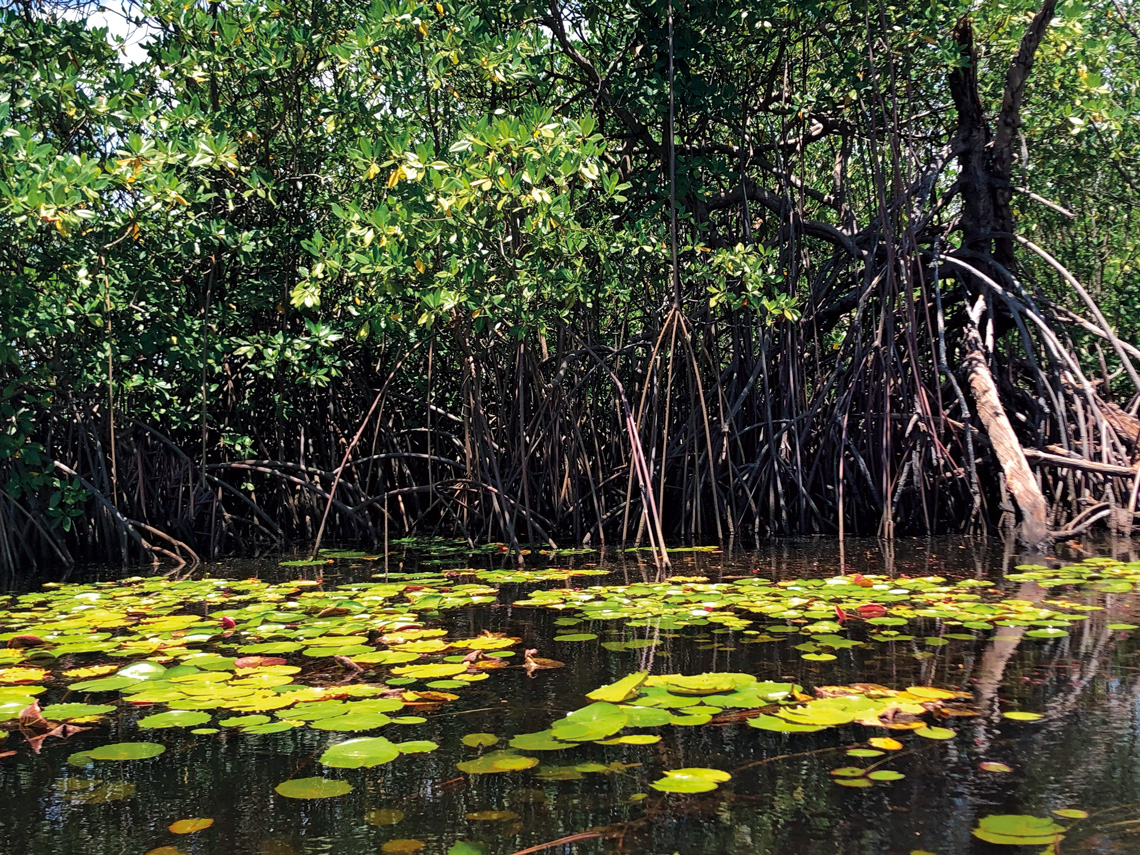Despite being viewed as disposable and suffering frequent infringement due to urban expansion, coastal ecosystems with vegetation (mangroves, seagrasses, and salt marshes) are highly important to the marine storage of organic carbon, also called blue carbon, which would contribute to global warming if it was released into the atmosphere. According to a study coordinated by oceanographer Vanessa Hatje of the Federal University of Bahia, coastal environments between Guyana and Argentina, which occupy an area of approximately 15,000 square kilometers, account for up to 4% of global annual carbon sequestration. Most of this coastline is covered by mangroves, which are responsible for 70% to 80% of its annual accumulation of organic carbon, absorbing 0.4 to 2.6 teragrams of carbon per year (1 teragram is equal to 109 kilograms). This is twice as much as the other types of coastal ecosystems examined. The team behind the calculations, which also includes researchers from the Federal University of Rio Grande (FURG), the Federal University of Juiz de Fora (UFJF), Nigeria, the UK, Australia, and Spain, argues that greater efforts must be made to incorporate coastal environments into climate change strategies (Communications Earth & Environment, May 8).
RepublishEcology
Coastal vegetation, carbon sponges

The mangrove is one of the environments found in the village of Siribinha, in Conde, Bahia
Vanessa Hatje / UFBA